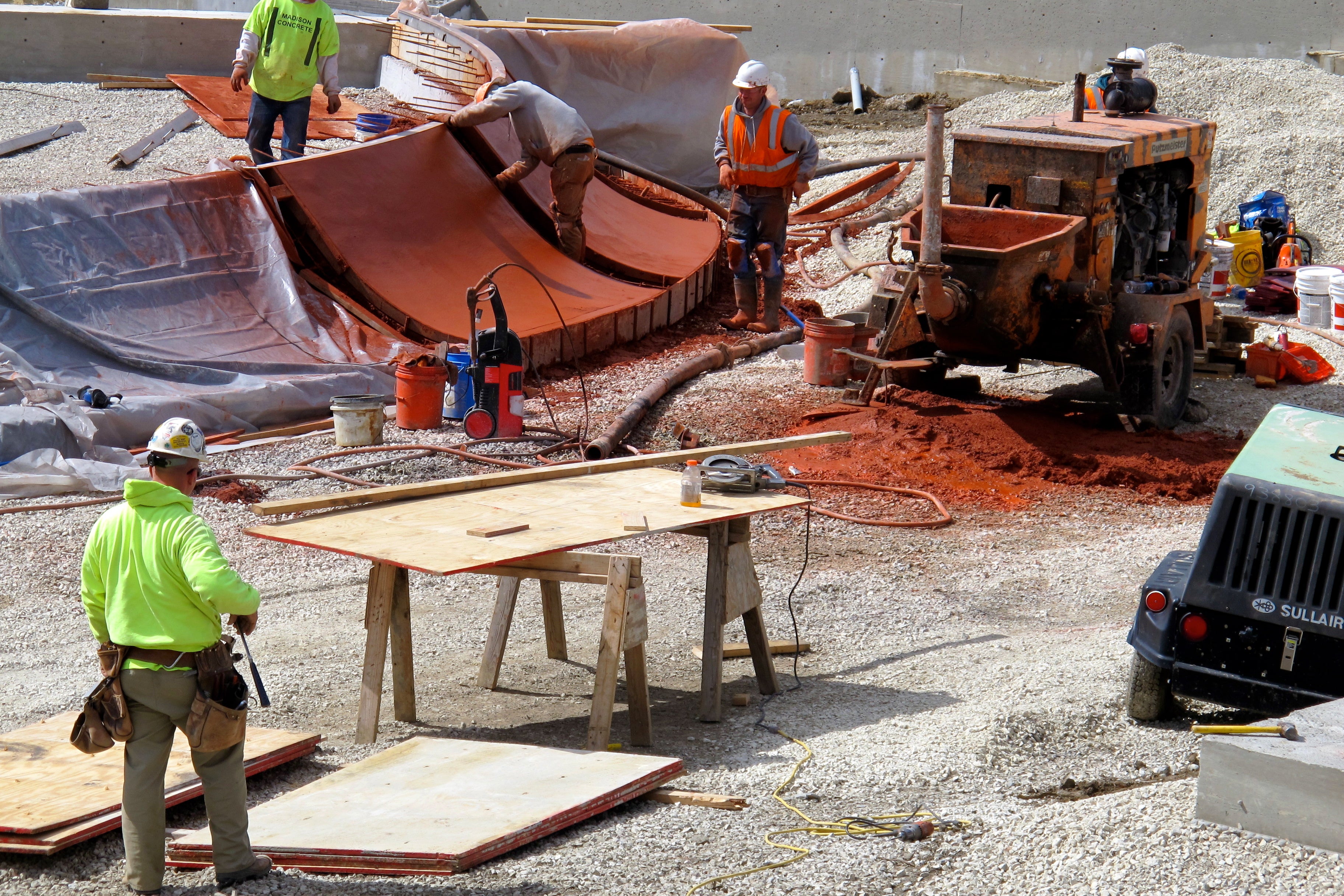Rebuild’s workforce diversity remains sticking point for Council

Two months ago, at the end of April, the entire body of City Council — all 17 members — huddled around the dais in City Hall’s Room 400 for a photo op. Celebrations were in order. A landmark agreement, one that, in the words of Councilwoman Jannie Blackwell, would “affect all our districts” merited special optics. “This is a citywide change, and that’s why we’re asking everybody to read a part,” Blackwell said.
One by one, members took their turn, reading fragments of a resolution praising a brand-new program that would provide a direct pathway for young men and women from Philadelphia public schools to find their way into family-sustaining jobs with the local building-trades unions. This new entity, called PennAssist, would differ from many of its predecessors — various pre-apprenticeship programs sponsored by the unions in the past — proponents insisted, because this would be a pre-employment program, or, a more direct funnel into the trades.
Last week, the PennAssist program came up again, seemingly out of the blue, during a highly anticipated (and ultimately anticlimactic) public hearing on the Kenney administration’s Rebuild legislation, which requires Council’s approval. A connection between these two initiatives had not previously been discussed publicly in the context of Rebuild, the administration’s half-billion plan to reinvest in parks, rec centers, and libraries. But according to sources close to the ongoing negotiations between the administration and the building trades over a Memorandum of Understanding (MOU) regarding Rebuild, the framework of PennAssist emerged months ago as a way to buoy the diversity goals of Rebuild.
In fact, these sources say that labor leaders, having agreed to several concessions already, had expected that the inclusion of a PennAssist-like program could be a decisive step in arriving at a consensus on Rebuild, and perhaps appease the Council members who’ve been voicing concerns for months regarding diversity and inclusion.
That’s not what unfolded in public view during last week’s hearing, when several Council members made clear that such new additions to the Rebuild legislation, including a version of PennAssist, would not be a panacea.
During testimony, Rebuild executive director Nicole Westerman said that the diversity goals of the initiative (which were informed by a 2016 analysis of employment composition in Philadelphia, conducted by the city’s Office of Economic Opportunity), would not only be achieved, but achieved in year one. Principally, those diversity goals include benchmarks that at least 45 percent of the workers on Rebuild sites consist of minority laborers (27 percent African-American, 14 percent Hispanic, 3 percent Asian).
Initially, Westerman’s commitment to hitting benchmarks in year one of Rebuild was greeted with skepticism from some members of Council, including Councilwoman Cindy Bass. On Monday, Bass remained unconvinced that the administration is being realistic. “It gives me no confidence whatsoever,” Bass said when asked Monday about the latest version of the legislation and meeting diversisty benchmarks. “You cannot go from A to Z, which is essentially what happened last week.”
If the diversity goals — and how to achieve them — remain the major sticking points holding up Rebuild, then what would the PennAssist model and other additions to the legislation do, exactly?
Taken together, the recent amendments seem designed to supply both the building trades and “project users” managing Rebuild work with an arsenal of options to enable a diverse workforce on Rebuild sites. “The amendments basically increase the number of organizations that can access workforce individuals who have gone through a program…that at some point in time were sponsored by the unions,” Clarke said, following the public meeting about Rebuild on Monday. “If we’re asking project users to meet certain numbers, we have to make sure that there are opportunities with individuals who have gone through these pre-apprenticeship and apprenticeship program. That’s what these amendments do.”
PennAssist is one piece of the equation. The program was conceived as part of Penn Medicine’s planned development of a 1,250,000-square-foot patient pavilion in University City. In an effort to create more job opportunities for local and minority workers in her district, Councilwoman Blackwell leveraged her councilmanic prerogative to get Penn and the unions of the Philadelphia building trades to agree to sponsor an employment — and not another “pre-apprenticeship program,” proponents say — program for Career and Technical Education (CTE) graduates.
The first year of PennAssist will kick off this summer, but here’s a summary of how it’s intended to work: All CTE graduates from the public-school system, regardless of their skill-set specialty (whether it’s in HVAC, plumbing, welding, or another skill) will be eligible for a two- to three-week boot camp designed to hone certain math and technical proficiencies that are required on job sites and ultimately necessary for passing the union apprenticeship exams. Students will be paid a stipend to attend the boot camp, then, they’ll be guaranteed a year’s worth of work on job sites, working alongside first-period apprentices (and compensated like them, at $16.50 per hour). Over the course of that year, PennAssist participants will be expected to take at least one apprenticeship test for a local union (and will be allowed to take multiple), so that, in theory, they’ll have a seamless transition into the building trades.
During the hearing last week, members of the administration signaled that the memorandum of understanding with the unions would establish a program similar to PennAssist and other pathways that would be more far-reaching. The approved amendments to the Rebuild legislation will open up contracting jobs to not only recent CTE graduates, but laborers with decades of experience outside of unions. Amendments pave the way for the Philadelphia Redevelopment Authority to oversee some Rebuild sites and hire non-union labor, estimated at 40-50 people, to do the job.
“Anyone hired by PRA for Rebuild will automatically be admitted as a member into the corresponding trade,” says deputy mayor for labor Rich Lazer. “This is a new practice that was created specifically for Rebuild and has been agreed to by the Building Trades Council.”
For some members of Council, the inclusion of a PennAssist-like framework in Rebuild came as a welcome, if not surprising, development in the administration’s ongoing negotiations. “That was actually quite an aggressive, creative strategy,” Clarke said. “[I think it] should be a model not only adopted in the PennAssist program, but looked at as a model across the city, and not just with government jobs but with any large-scale building initiative. If we’re serious and genuine — which the unions have indicated they are — about changing the demographics of the building trades, then this is the kind of program we’ll need.”
Whereas in late-April, the entire body of Council seemed intent on hailing PennAssist as a golden model, the city’s long history of failing to successfully pressure the unions into diversifying their ranks still looms large. Bass, for one, remained cautious about endorsing PennAssist as the final fix for Rebuild. “I don’t know enough. It’s brand new. There are a couple new players at the table for these opportunities,” Bass said. “At this point, my goal is that they get the support that they need to be successful. We need to make sure this is right the first time.”
It’s important to keep in mind what the unions are getting from the city, in exchange for their willingness to embrace PennAssist and a like-minded version of the program in Rebuild. Of course well-trained apprenticeship or apprentice-ready candidates is a draw. But secondly, the Kenney administration has signaled that it will keep in place the Project Labor Agreement (PLA) signed under Michael Nutter. Essentially, PLAs (which have many critics) guarantee that the major trade unions will get contracts on capital projects that will cost more than $3 million. According to the administration, the vast majority of Rebuild projects will fall under that threshold. Further, keeping the PLA in place provides the unions with an incentive to keep up with the diversity goals. If they don’t hold up their end of the bargain as outlined in the MOU, that lucrative PLA could be voided.
Lingering uncertainty surrounding the finalized details of the Rebuild legislation has fueled speculation that it might not pass before Council’s summer recess. If amendments to the legislation aren’t finalized on Thursday morning, providing the bill a chance to clear the committee of the whole and receive a first reading in Council on Thursday, then Rebuild will be delayed until fall, according to the administration’s director of communications Lauren Hitt. “And if they don’t pass this session, then we can’t start on projects until 2018, which assumes they pass as soon as they get back in September.”
The impact of a delay on Rebuild could be significant, the administration believes. While it’s true that Mayor Kenney has agreed not to borrow the $300 million in bonds for Rebuild until litigation attempting to block the soda tax winds its way through the courts, there is plenty of work that the Rebuild team intends on undertaking over the summer should legislation pass. Selecting a first round of sites, qualifying project users, ramping up community engagement — all of those steps would be postponed, according to Hitt. Without a structure agreed upon with Council, the administration won’t move forward with the beginning stages of design and construction, which it could theoretically begin with the roughly $13 million earmarked for Rebuild in the capital budget and start-up money granted by the William Penn Foundation.
On the other hand, detractors sounded unconvinced that the amendments currently being considered would be enough. “We still haven’t seen the MOU,” Bass says. “We’re hopeful that on Thursday morning, after a year of waiting, the administration will have something available so that we can actually see it, to see how close or far we are. We’re hopeful that we’re close.”
UPDATED 6/14/17, 10:30pm: Lauren Hitt told PlanPhilly that councilmembers were provided with a copy of the MOU in February, last Tuesday, and again on Wednesday.
WHYY is your source for fact-based, in-depth journalism and information. As a nonprofit organization, we rely on financial support from readers like you. Please give today.




